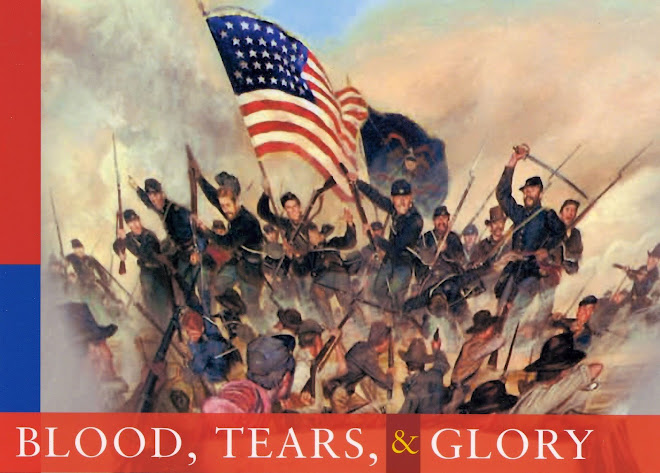
The Ominous Ides of March
These days of mid-March are heavy with the anticipation of battles to come. The military machines of North and the South are moving into position as spring beckons.
Near Washington, Maj. Gen. George B. McClellan and his top commanders meet to decide whether to adopt his plan of a “peninsular campaign”—that is, a drive against the Confederate capital of Richmond from the southeast, via the Virginia Peninsula. Doubtful about the idea, President Lincoln had told McClellan to secure agreement from his generals. Although he correctly sensed the Peninsular Campaign was problematical, at this early point in the war, Lincoln still has more confidence in his generals than in his own military thinking.
Not surprisingly, McClellan’s commander support him and so, with vague promises to Lincoln that enough troops would be left behind to protect Washington, the “Young Napoleon” begins implementing his great idea. Soon, camps around Washington will bustle with soldiers preparing for action. On to Richmond!
In Richmond, President Jefferson Davis recalls Gen. Robert E. Lee from his south Atlantic Coast command and makes him chief military advisor, a vaguely defined position that nonetheless will lead to historic consequences for McClellan’s Peninsular Campaign.
In North Carolina, meanwhile, Brig. Gen. Ambrose Burnside has landed 11,000 Union soldiers on the banks of the Neuse River and begun moving against the historic city of New Berne. This effort holds out the possibility of an attack on Richmond from yet another direction.
There is skirmishing at several points in the nation, but the loudest noises arise around the Mississippi River town of New Madrid, Missouri. Here, and at the nearby Island No. 10, Confederate Gen. P. G. T. Beauregard has concentrated his forces in an effort to hold the river. An “S” curve in the river makes it a chokepoint for water traffic and an important place for the Confederates to build a stronghold. Fifty miles upriver, the previous Confederate stronghold at Columbus, Kentucky, has been abandoned and the troops transferred. About 7,000 Confederate soldiers and numerous artillery pieces await any attacker.
Regardless, under orders from Maj. Gen. Henry W. Halleck, Union Brig. Gen. John Pope of Illinois has arrived on New Madrid’s doorstep. He brings him his Army of the Mississippi and some big siege guns, with which he begins a merciless pounding of the town and its defenders. (Pictured above: a Union siege gun in place in Virginia. Union siege guns typically threw 12- or 24-pound shells; this gun is a 24-pounder.)
Pope was a big-chested blowhard, but what he accomplishes here will eventually propel him into the war’s main spotlight—if only briefly.
IT’S COMING SOONER THAN YOU THINK: April 12, 2011—less than 3½ years from now!—will be the 150th anniversary of the outbreak of the Civil War. In 1861, April 12 was the day Confederates opened fire on Fort Sumter in Charleston Harbor.
Your suggestions, comments, and questions about this blog are always welcome. Address the author: Ohioan@bloodtearsandglory.com
For more information about the author and his newest book, please go to http://www.orangefrazer.com/btg



No comments:
Post a Comment